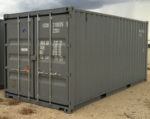
Alex Mills
By Alex Mills
Disruptions in global oil supplies have made traders of crude oil nervous, which has caused crude oil prices to reach their highest level this year.
Crude oil settled at $51.23 per barrel for 30-day delivery on the NYMEX June 8. It was the third consecutive day oil prices increased.
The Energy Information Administration (EIA) issued a report on June 9 that stated: “Unplanned global oil supply disruptions averaged more than 3.6 million barrels per day (b/d) in May 2016, the highest monthly level recorded since EIA started tracking global disruptions in January 2011.”
From April to May, disruptions grew by 0.8 million b/d as increased outages, largely in Canada, Nigeria, Iraq, and Libya, more than offset reduced outages in Kuwait, Brazil, and Ghana, the report stated.
Rising oil demand and falling U.S. crude oil production also contributed to firmer prices.
In Canada, the evacuation of oil workers because of wildfires in Fort McMurray, Alberta, reduced Canada’s oil sands production and led to an average 0.8 million b/d supply disruption in May, with a daily disruption peak of more than 1.1 million b/d. In late May, workers began returning to the area, and production is gradually restarting at a number of projects.
In Nigeria, an escalation in militant attacks on oil and natural gas infrastructure led to a substantial increase in supply disruptions in May, which averaged 0.8 million b/d, almost 0.3 million b/d higher than in April. Nigeria’s crude oil production fell to an average of 1.4 million b/d in May, its lowest monthly level since the late 1980s. The infrastructure attacks are occurring in response to President Buhari’s restructuring and planned phase-out of the amnesty program, discontinued pipeline protection contracts to former militants, and the increased military presence in the Niger Delta. For the first five months of 2016, Nigeria’s supply disruptions averaged 0.5 million b/d, 0.2 million b/d more than in 2015. EIA expects Nigeria’s disruptions to remain relatively high through 2017.
In southern Iraq, power outages and inclement weather in the Basra Gulf contributed to a 50,000 b/d increase to Iraq’s supply disruption. In Libya, exports from Marsa al-Hariga, currently Libya’s largest operating oil terminal, were temporarily halted from late-April to mid-May, increasing Libya’s disruption by an average of 50,000 b/d in May. Exports from the terminal resumed after the rival state oil companies signed a deal to restart exports.
In EIA’s latest Short-Term Energy Outlook, global supply outages are expected to decrease in June because most of the recent outages, particularly in Canada, have already started to subside. However, disruptions tied to political disputes or conflicts often last longer than those related to weather. Oil disruptions will probably continue in Libya, Nigeria, northern Iraq, South Sudan, and Yemen, among others, all of which accounted for nearly 90 percent of unplanned disruptions during the first five months in 2016.
In the U.S., crude stocks fell for the third consecutive week, sliding by 3.2 million barrels, EIA data showed. But gasoline inventories rose by 1 million barrels and distillates, which include diesel and heating oil, gained 1.8 million barrels. The gasoline build was a big surprise, specially since peak driving season is under way.
Some analysts believe the market is experiencing a momentum trade in spot crude helped by a weaker dollar, which is at a five-year low. Longer-dated oil remains in contango due to builds in products such as gasoline and distillates. This could limit the gains in spot prices. Contango is a term used by oil traders meaning that crude oil traded on the futures market is higher in the future than the current price for 30-day contracts. For example, oil closed at $51.23 for 30-day delivery on June 8, 2016 and $53.72 for June 2017, a difference of $2.49.
Prices were also supported by data showing China’s May crude oil imports at six-year highs.
In London, the Brent contract for August delivery on ICE settled $1.07 higher at $52.51 per barrel, which is just $1.28 higher than the NYMEX closing price. Just a few years ago, Brent traded as much as $25 higher than NYMEX.
Alex Mills is President of the Texas Alliance of Energy Producers. The opinions expressed are solely of the author.


















Speak Your Mind